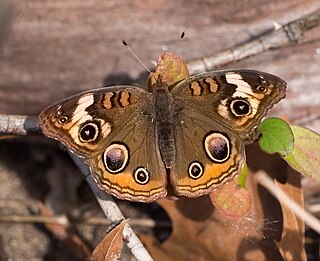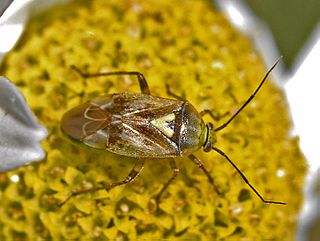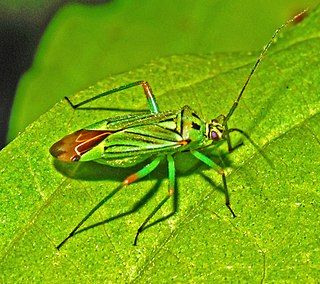
Junonia coenia, known as the common buckeye or buckeye, is a butterfly in the family Nymphalidae. Its range covers much of North America and some of Central America, including most of the eastern half of the US, the lower to middle Midwest, the Southwest, southern Canada, and Mexico. Its habitat is open areas with low vegetation and some bare ground. Its original ancestry has been traced to Africa, which then experiences divergence in Asia. The species Junonia grisea, the gray buckeye, is found west of the Rocky Mountains and was formerly a subspecies of Junonia coenia.

The marsh fritillary is a butterfly of the family Nymphalidae. Commonly distributed in the Palearctic region, the marsh fritillary's common name derives from one of its several habitats, marshland. The prolonged larval stage lasts for approximately seven to eight months and includes a period of hibernation over the winter. The larvae are dependent on the host food plant Succisa pratensis not only for feeding but also for hibernation, because silken webs are formed on the host plant as the gregarious larvae enter hibernation. Females lay eggs in batches on the host plant and are, like other batch-layers, selective about the location of oviposition because offspring survivorship levels for batch-layers are more tied to location selection than they are for single-egg layers.

The scarce fritillary is a species of butterfly in the family Nymphalidae. It is found in Austria, Bulgaria, Czech Republic, Finland, France, Germany, Greece, Hungary, Kazakhstan, Lithuania, Luxembourg, Poland, Romania, Russia, Serbia and Montenegro, and Sweden. and East across the Palearctic to Mongolia.

Picromerus bidens, the spiny shieldbug or spiked shieldbug, is a carnivorous species of shield bug in the family Pentatomidae.

Psylla pyri, commonly known as the pear psylla or pear psyllid, is an insect in the family Psyllidae. Originating in Europe and Asia, it has spread to North America. It is a pest of pear trees, sucking the sap, damaging the foliage, flowers and fruit and diminishing the crop.

Biston strataria, the oak beauty, is a moth of the family Geometridae. It is native to Europe, the Balkan countries and the Black Sea region as far as Asia Minor and the Caucasus. The species was first described by Johann Siegfried Hufnagel in 1767. B. strataria is found in a variety of habitats, but is mostly found in woodlands where it rests on the bark of trees, camouflaged by its mottled black and grey wings. The male has feather-like antennae while those of the female are more thread-like. The moth has a wingspan of 40 to 56 mm.

Utetheisa pulchella, the crimson-speckled flunkey, crimson-speckled footman, or crimson-speckled moth, is a moth of the family Erebidae. The species was first described by Carl Linnaeus in his 1758 10th edition of Systema Naturae.

Edith's checkerspot is a species of butterfly in the family Nymphalidae. It is a resident species of western North America and among the subspecies, entomologists have long been intrigued by their many phenotypic variations in coloration, wing length, and overall body size. Most populations are monophagous and rely on plants including Plantago erecta and Orthocarpus densiflorus as their host species in developing from eggs through to larvae, pupae, and mature butterflies. Males exhibit polygyny whereas females rarely mate more than once. Males devote most of their attention to mate acquisition, and such mate locating strategies such as hilltopping behavior have developed. Climate change and habitat destruction have impacted certain subspecies. Three subspecies in particular, Euphydryas editha quino, Euphydryas editha bayensis and Euphydryas editha taylori, are currently under protection via the Endangered Species Act.

Euphydryas cynthia, or Cynthia's fritillary, is a butterfly of the family Nymphalidae. It is found in the Alps and in mountainous areas of Bulgaria in alpine meadows from 400 to 2,300 meters.

Capsodes flavomarginatus is a species of plant bug belonging to the family Miridae, subfamily Mirinae.
Adelphocoris rapidus, common names for which are rapid plant bug or superb plant bug, is a species of Hemiptera in the family Miridae, that can be found everywhere in the United States, and in the Peace–Athabasca Delta, Canada. The species are larger than other members of the family, and are either yellowish-black or orange-black coloured.

Deraeocoris ruberis a species of bug in the Miridae family.

Heterotoma planicornis is a species of bug from Miridae family.

Closterotomus biclavatus is a plant bug belonging to the family Miridae, subfamily Mirinae. The species was first described by Gottlieb August Wilhelm Herrich-Schäffer in 1835.
Dicyphus hesperus is a species of true bug in the family Miridae. It is a generalist predator of other insects and also feeds on plant tissues. It is native to North America and has been used there in biological control of agricultural pests, especially whitefly on tomatoes.

Lygus rugulipennis, the European tarnished plant bug, is a species of plant bugs of the family Miridae.

Closterotomus ventralis is a species of plant bugs belonging to the family Miridae, subfamily Mirinae.
Deraeocoris brevis is a species of predatory plant bug in the family Miridae. It is native to North America where it feeds on plant pests in apple and pear orchards.

Blepharidopterus angulatus, the black-kneed capsid, is a species of plant bug in the family Miridae. It is found in North Africa, Europe East across the Palearctic to Central Asia and in North America.

Mermitelocerus schmidtii is a species of plant bug belonging to the family Miridae.


















